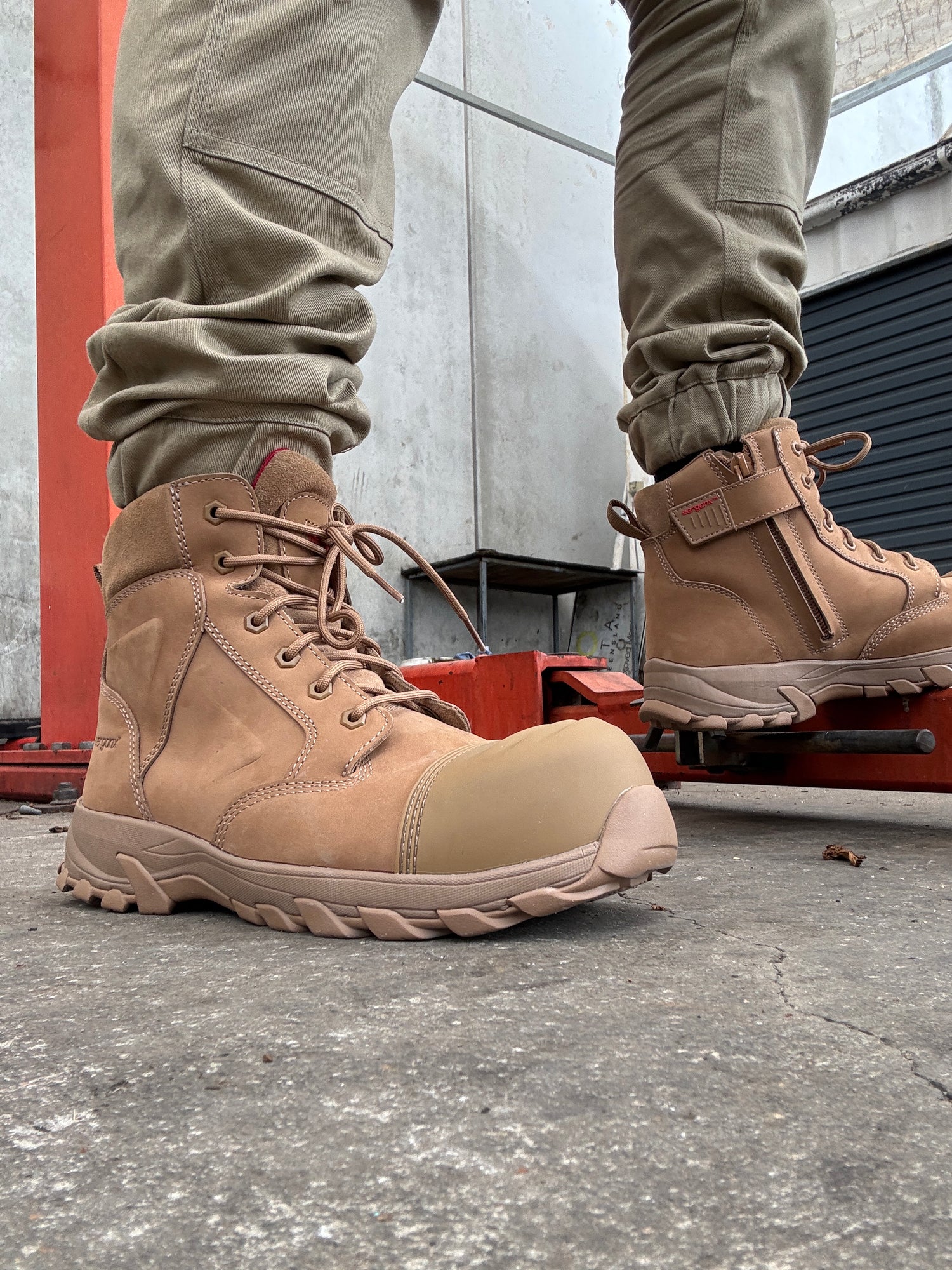Orthotics for Heel Pain, Heel Spurs, and Plantar Fasciitis
HOME / FOOTWEAR/ ORTHOTICS FOR HEEL PAIN AND PLANTAR FASCIITIS
Plantar fasciitis and heel spurs are two of the most common reasons for foot pain. They usually affect just one foot, but in some cases can affect both. They are both conditions that develop over time and can significantly impact your daily life.
What exactly is Plantar Fasciitis?
Plantar fasciitis occurs when the plantar fascia, a ligament that runs from the bottom of the heel to the toes, becomes inflamed. It is the main cause of heel pain for many patients, but luckily it can be treated by methods such as orthotic shoes, inserts, and physical therapy.
Individuals with feet that overpronate (roll inwards excessively) are at a higher risk of developing plantar fasciitis. Overpronation causes the plantar fascia to stretch, so this long ligament becomes strained and aggravated with repetitive motions (e.g., walking, running, standing).

What are heel spurs, and how are they different from plantar fasciitis?
On the other hand, heel spurs are bony growths that protrude from the heel bone. Like plantar fasciitis, they develop over time and contribute to heel pain. Heel spurs often develop where the plantar fascia attaches to the heel bone, so the two conditions are closely linked.
How do I know if I have plantar fasciitis or heel spurs?
The main complaint of most individuals with plantar fasciitis or heel spurs is heel pain. However, you may also experience some/any of the following:
- Inflammation and swelling of the heel area
- Foot pain that is worse in the morning or after extended periods of activity
- Heightened foot pain after walking barefoot or prolonged standing
How can I treat plantar fasciitis and heel spurs?
Most cases of plantar fasciitis and heel spurs do not require surgery. However, it is best to consult a healthcare provider, such as a podiatrist, to have your condition thoroughly assessed. Plantar fasciitis and heel spurs are issues that may gradually worsen if not addressed early on, so, you can expedite your recovery by obtaining a professional opinion. After examining your feet, you may be recommended some of the following treatment methods:
- Rest and pain relievers
- Physical therapy and stretching exercises targeting the calf muscles
- Wearing better-fitting shoes with adequate arch support
- Shoe inserts or orthotic insoles
- Night splints
What to look for in an orthotic for heel pain
As mentioned above, one of the most common causes of plantar fasciitis and/or heel spurs is overpronation (also called flat feet). Therefore, for orthotic insoles to effectively treat heel pain, they should have the following features:
-
Targeted arch support – Orthotics with a high arch design (such as the Ergonx Ultra Soft) are specifically designed for people with collapsed arches. With the arches supported, your feet will be able to work more efficiently and avoid fatigue. By keeping your arches high, your plantar fascia will be able to rest, heal, and recover more quickly.

-
A deep heel cup – Orthotics with a deep heel cup aim to keep your foot’s natural fatty pad aligned underneath the ankle, thereby stabilizing the foot, and reducing pressure on the heel.

-
Cushioning where you need it – Supplementary cushioning at the balls of your feet, the heel area, and your toes will make for an extra comfortable experience.

- Durable and flexible materials – Select orthotics that are durable but soft to the touch. Inserts made of polyurethane are a great option due to their resistance against erosion and good breathability.
What if an off-the-shelf orthotic doesn’t work for me?
If an off-the-shelf orthotic is not able to treat your condition, you may need to consider custom-made orthotics prescribed by a podiatrist. A 3D scan of your foot will be generated and sent to the lab, where a tailored insert will be constructed based on the exact structure of your anatomy. These orthotics are one-of-a-kind and designed for your specific cause of heel pain.
Please reach out!
If you have more questions regarding heel pain, plantar fasciitis, treatment options, and/or pain in your calf muscles, please feel free to comment below or reach out to our team at docpods.com/au. Our team of podiatrists would be happy to help!


